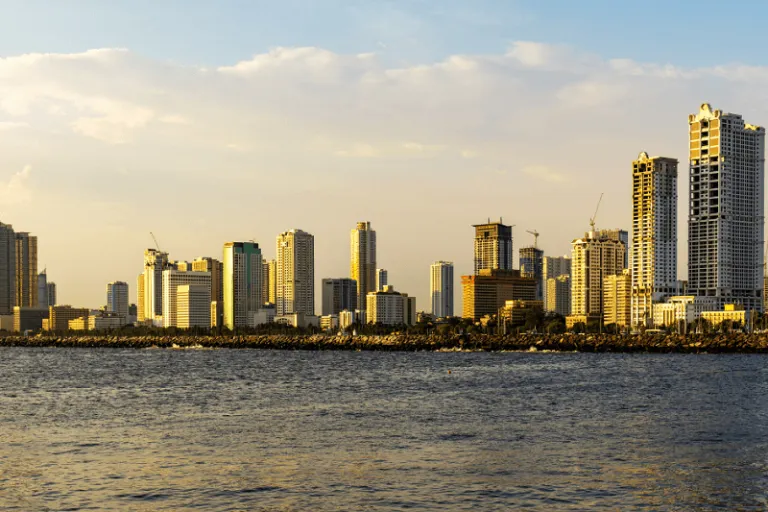The promise of new flavours beckons from Banawe.
Which Aircon You Should Buy, According to This Appliance Store

Growing up in the province, I was used to a no-aircon lifestyle. When it would get hot, the beach was but a quick tricycle ride away. Or we could hang around in tree plantations nearby, which were everywhere. But this was years ago. Now, I live in a cramped neighbourhood in Manila, enduring unusually hot summers while struggling to keep my ultra-sensitive skin in check.
Air conditioning as investment
An aircon-less life in and outside the city are obviously two very different things. Rather than having nature to escape to, a place like Manila has shopping malls, cafes, and other places that trade your brief “aircon time” for non-essential purchases. When you spend your days at home, it gets terribly frustrating and even painful in many ways.
We’re not here to talk about the disadvantages of having an aircon, because I assume most of us should know them by now (e.g. expensive, high electricity costs, maintenance, etc.). But if you’re one of those at least considering buying an aircon in the Philippines, I’m here to reassure you that you’re on the right track. Also, to tell you that many of the above disadvantages can be easily overcome with moderate and correct aircon usage.

Rather than giving you an alternative to escape the unbearable heat, air conditioners are generally secure, provide better comfort, keep your electronics in tip-top condition, prevent dehydration, and in some cases, help treat heat-induced health problems. As for the costs, most stores now offer various payment options so you don’t feel all that financially burdened.
Also read: 10 Budget-Friendly Appliances for ₱2K and Below!
Types of aircons for beginners
As there are plenty of things to remember when buying an aircon in the Philippines, get started by simply looking at one key thing: your space. Here are the four different types of aircons and what they offer in a nutshell according to Abenson, one of the largest appliance stores in Manila. It’s where I also bought my first-ever air conditioning unit (a Panasonic CWN820JPH).
Window
- Best for small to medium-sized spaces
- Affordable and easy to install, as well as to maintain
- Often comes in a box shape, but features can still vary
Split
- Cools larger areas a lot faster
- Quietest type and have a variety of other functions
- More expensive and requires space outside the room

Portable
- Can be easily installed anywhere and has more mobility
- Takes up floor or ground space rather than wall
- Limited cooling capacity and considerably louder
Package
- Best for large areas that accommodate more people
- Efficient and high cooling capacity
- Expensive and often operates with noticeable buzzing sound
As a non-air conditioning expert, it would be unwise for me to recommend a particular aircon type. With that being said, Abenson lists down the following key factors in choosing the unit you will eventually buy: exposure to sunlight; availability of windows; the presence of other electronics; and the number of people occupying the space.
Also read: UV & Sanitation Gadgets 101: Top Items You Should Invest In
Things to know before buying an aircon in the Philippines
When in doubt about which specific unit to buy for your cooling needs, the appliance store also suggests adding 1 horsepower or HP to what you want. The smaller the space is, the lower the HP should be. For example, if your room is no more than 10sqm, an air conditioner with less than 1 HP is needed.

Considering the higher watts required by air conditioners, some units are equipped with an inverter. Similar to refrigerators, this is the energy-saving technology that basically controls an air conditioner’s motor speed so that it remains electricity-efficient. Air conditioners with this technology are usually more expensive (around at least ₱25,000).
If your budget doesn’t allow you to invest in an inverter air conditioner yet, choose non-inverter units with high energy efficiency ratio or EER. This is the number you’ll often notice stuck to a brand-new aircon; and it basically means that the higher the number is (at least 10), the more energy-saving it is.
Of course, there are plenty more things to know about buying an aircon in the Philippines. However, be sure to look out for these basics to get you started. Appliance stores like Abenson also offer user-friendly online platforms to guide you further, so take advantage of them!
Featured image credit: Kichigin and NotionPic via Canva Pro
Published at
About Author
Joser Ferreras
Subscribe our Newsletter
Get our weekly tips and travel news!
Recommended Articles
10 Best Banawe Restaurants for a Mouthwatering Food Trip in QC 14 Best Credit Cards for Travel in the Philippines The only plastic we need for travel.
10 Best Mountain Cafes in the Philippines for Your Peak Coffee Experience Coffee date on the mountains, anyone?
10 Commandments for Responsible Travel Flexing Spread the good word!
10 Instagrammable Laguna Restaurants and Cafes You’ll Love Elevate your Insta-game at these Laguna spots.
Latest Articles
Anko Philippines Store Opens Today – See What’s in Store at Glorietta 2 This holiday season, give your home an upgrade!
LRT-1 Cavite Extension Launches: Five New Stations Open November 16 Get ready for quicker commutes!
China Expands Visa-Free Access: 9 New Countries Added for 2025 Check if your country’s on the list and start planning!
Your Guide to Boyz II Men’s Manila Concert: Tickets, Venue, and More! Get ready for a night of timeless hits!
The U.S. Airlines' New Refund Policy: Everything Travellers Need to Know Talk about hassle free!

